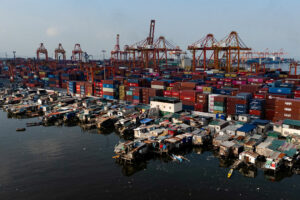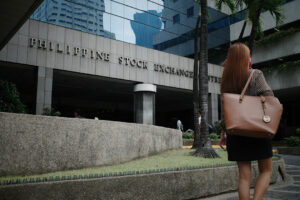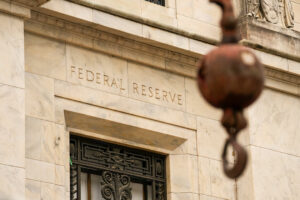A House of Representatives committee on Monday moved to channel billions worth of flood control funds to education and health as they began revising the proposed PHP 6.793-trillion national budget for 2026.
The House sub-committee on Budget Amendments Review redirected PHP 255 billion in flood control funding originally allocated for the Public Works department next year towards the Health and Education departments, in line with President Ferdinand R. Marcos, Jr.’s call to strengthen human capital development.
“We want to ensure that we are able to reallocate it in a way that the budget will be most responsive to the needs of the Filipino people,” said Nueva Ecija Rep. Mikaela Angela B. Suansing, who chairs the House Appropriations Committee.
The reallocation follows allegations of irregularities in flood control projects, including substandard, incomplete or nonexistent infrastructure, in a country prone to flooding.
The House sub-committee overseeing fund rechanneling is part of a broader push to improve transparency in budget deliberations, replacing the previously opaque “small committee” that handled revisions to the national spending bill.
The House will begin plenary deliberations on the proposed national spending plan today (Sept. 23), Ms. Suansing said, over a month after the Budget department submitted the National Expenditure Program to Congress.
Ms. Suansing said deliberation on the budget will continue until the House passes the budget bill on second reading before the end of September.
Congressmen raised the Department of Education’s (DepEd) proposed budget by 2.8% or PHP 26.54 billion to PHP 955.04 billion for 2026.
The bulk of the proposed funding increase would go towards DepEd’s classroom construction efforts amid a shortage in government schools, more than doubling the allocation to PHP 36.5 billion from PHP 13.2 billion.
The boost in classroom construction budget could fund an additional 19,300 classrooms nationwide, helping ease classroom shortages in government schools, Party-list Rep. Brian Poe Llamanzares, vice-chairman of the House Appropriations Committee, told lawmakers.
Other programs that received additional funding include the school-based feeding program (PHP 1.5 billion), additional compensation for teachers providing tutoring (PHP 984.11 million), and teaching overload pay for teachers (PHP 579.55 million), among others.
The House sub-committee also separately added P6.61 billion for the Commission on Higher Education’s (CHED) Tertiary Education Subsidy to PHP 22.17 billion and hiked the Tulong Dunong Program budget by PHP 2.69 billion.
CHED Chairperson Shirley C. Agrupis earlier told lawmakers that about 300,000 college students could lose access to government grants if Congress does not increase the budget for the programs that cover the full or partial cost of college education for students enrolled in state colleges.
Lawmakers also increased the Department of Health’s proposed budget for next year by 3.2% to PHP 948.07 billion from PHP 918.79 billion initially earmarked under the National Expenditure Program.
Of the amount, PHP 26.73 billion would be channeled towards the government’s health financial assistance for poor patients, with PHP 2.4 billion allotted for the completion of key government hospitals nationwide.
Congressmen also tweaked the government’s subsidy for the Philippine Health Insurance Corp. (PhilHealth) to PHP 60 billion, aligning with Mr. Marcos’ directive to restore part of the PHP 89.9 billion the National Government took from the state health insurer last year.
“This is in line with the pronouncement… to return back what was taken from the budget of PhilHealth,” Surigao del Sur Rep. Romeo S. Momo, Sr., vice-chairman of the House appropriations panel, told lawmakers.
The Budget department is “working on identifying the appropriate funding source to effect the return” of the P60-billion PhilHealth funds, Budget Secretary Amenah F. Pangandaman told BusinessWorld.
“While other options — such as the use of savings, unprogrammed appropriations, or a supplemental budget — exist under current budgetary frameworks, these are subject to strict constitutional and legal requirements,” she said, noting that providing funding to PhilHealth via Congress is the “clearest and most transparent path.”
Congressmen also increased the Social Welfare department’s budget for the Assistance to Individuals in Crisis Situations (AICS) program by PHP 32 billion to PHP 59.04 billion. AICS provides financial assistance to individuals in crisis, including medical, burial, transportation, and educational assistance.
They also hiked the Department of Agriculture’s budget by PHP 41.08 billion to PHP 176.01 billion.
About PHP 8.98 billion would be redirected towards the construction of additional farm-to-market roads, with PHP 9.21 billion going towards the construction of post-harvest facilities and rehabilitation of existing structures, among others, a presentation by the House Appropriations Committee showed.
The House sub-committee also channeled about PHP 1 billion to the Transportation department for its Metro Rail Transit Line 3 rehabilitation project, and an additional PHP 266 million for its operations.
Lawmakers also added an additional PHP 900.56 million for the acquisition of 40 fast patrol ships for the Philippine Coast Guard (PCG), and PHP 656.86 million to acquire a “dark vessel” detection system for ships operating in Philippine waters.
The PCG has been at the forefront of Manila’s efforts to assert its territorial claims in the South China Sea, where China’s expansive nine-dash line overlaps with the exclusive economic zones of the Philippines, Vietnam and Malaysia.
Congressmen also agreed to provide the Defense department with an additional PHP 556.86 million for the development of a forward operating base in Palawan province, which faces the disputed waterway. Another PHP 300 million was earmarked for the acquisition of land lots for the construction of an air force base in Laoag, Ilocos province.
The decision to reallocate flood control funds toward human capital development is a step in the right direction for the government, said John Paolo R. Rivera, a senior research fellow at the Philippine Institute for Development Studies.
“Lawmakers must ensure that these funds go beyond recurring costs and are directed toward systemic improvements such as teacher training, health infrastructure, digital access and nutrition,” he said in a Viber message.
Congress should also consider revisiting the broader proposed national budget rather than focusing solely on the PHP 255-billion flood control funds, Mr. Rivera said.
“Without it, this reallocation may just be a temporary fix rather than a transformative pivot,” he said.
“The issue is that we should place our funds in investments with higher gains,” Leonardo A, Lanzona, an economics professor at the Ateneo de Manila University, said in a Facebook Messenger chat. “We should target these funds to the poor since these are the households that need the resources the most and hence produce the greatest gains.” —Kenneth Christiane L. Basilio, Reporter, with inputs from Aubrey Rose A. Inosante







 DOWNLOAD
DOWNLOAD













